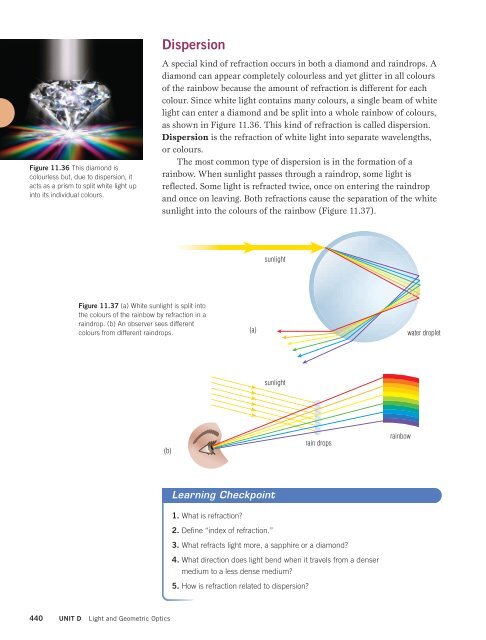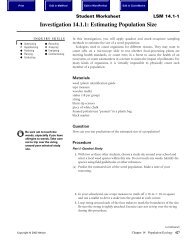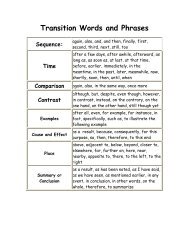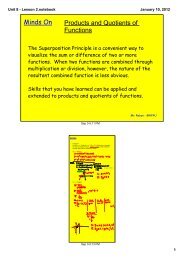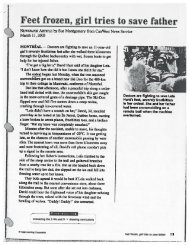Chapter 11.pdf
Chapter 11.pdf
Chapter 11.pdf
- No tags were found...
You also want an ePaper? Increase the reach of your titles
YUMPU automatically turns print PDFs into web optimized ePapers that Google loves.
DispersionFigure 11.36 This diamond iscolourless but, due to dispersion, itacts as a prism to split white light upinto its individual colours.A special kind of refraction occurs in both a diamond and raindrops. Adiamond can appear completely colourless and yet glitter in all coloursof the rainbow because the amount of refraction is different for eachcolour. Since white light contains many colours, a single beam of whitelight can enter a diamond and be split into a whole rainbow of colours,as shown in Figure 11.36. This kind of refraction is called dispersion.Dispersion is the refraction of white light into separate wavelengths,or colours.The most common type of dispersion is in the formation of arainbow. When sunlight passes through a raindrop, some light isreflected. Some light is refracted twice, once on entering the raindropand once on leaving. Both refractions cause the separation of the whitesunlight into the colours of the rainbow (Figure 11.37).sunlightFigure 11.37 (a) White sunlight is split intothe colours of the rainbow by refraction in araindrop. (b) An observer sees differentcolours from different raindrops.(a)water dropletsunlight(b)rain dropsrainbowLearning Checkpoint1. What is refraction?2. Define “index of refraction.”3. What refracts light more, a sapphire or a diamond?4. What direction does light bend when it travels from a densermedium to a less dense medium?5. How is refraction related to dispersion?440 UNIT D Light and Geometric Optics


